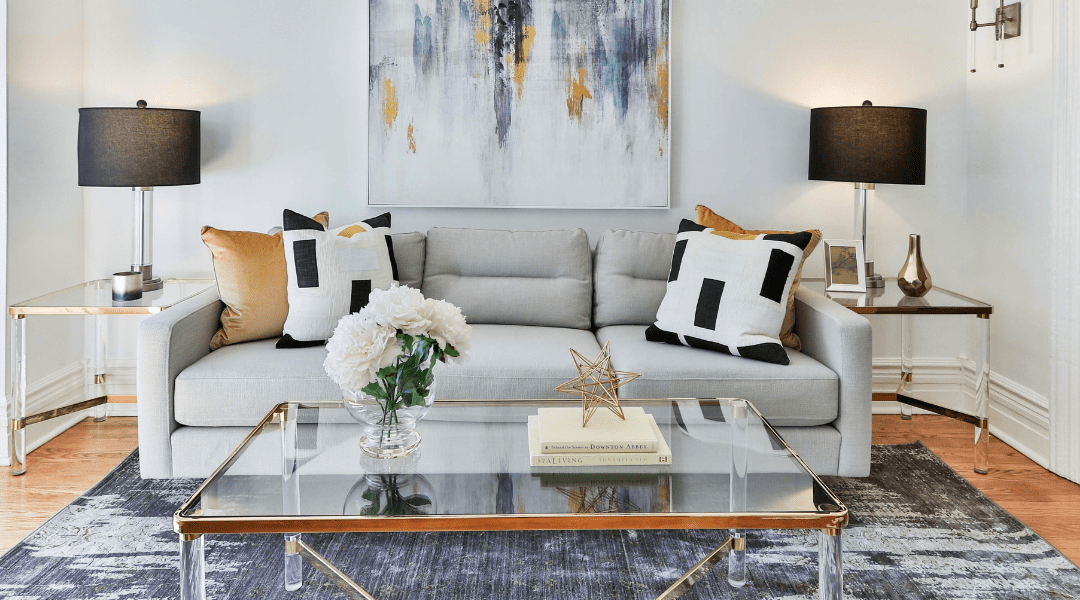One of the biggest living room design mistakes I see people making is getting the scale and proportion of their furniture wrong. Actually, it’s not just with furniture—I see it happen with everything from wall art to how a coffee table is styled.
What does it look like if scale and proportion are off?
Imagine walking into a living room where the sofa is so large it overpowers the space, making everything else feel cramped and out of place. Or, on the flip side, a tiny sofa is floating in the middle of a vast room, leaving the space feeling unfinished and unbalanced.
This kind of design mistake is easy to make, especially in extreme spaces—like a large open-concept family room with soaring ten-foot ceilings or a compact 600-square-foot condo living room where every inch counts.
I also see this happen when homeowners try to squeeze in more seating than the space can realistically handle. The result? Furniture gets pushed against the walls (another design faux pas), and the room ends up with no proper flow or cohesion.
It’s a problem I encounter all the time, and the reason is simple: most people don’t consider scale and proportion when choosing furniture. Or perhaps they don’t realize just how much these elements impact the look and feel of a space.
The good news? This is completely fixable. With a few key design principles, you can create a living room that feels balanced, well-proportioned, and inviting. In this guide, I’ll walk you through how to choose the right-sized furniture, common mistakes to avoid, and the must-know design rules that will transform your space.
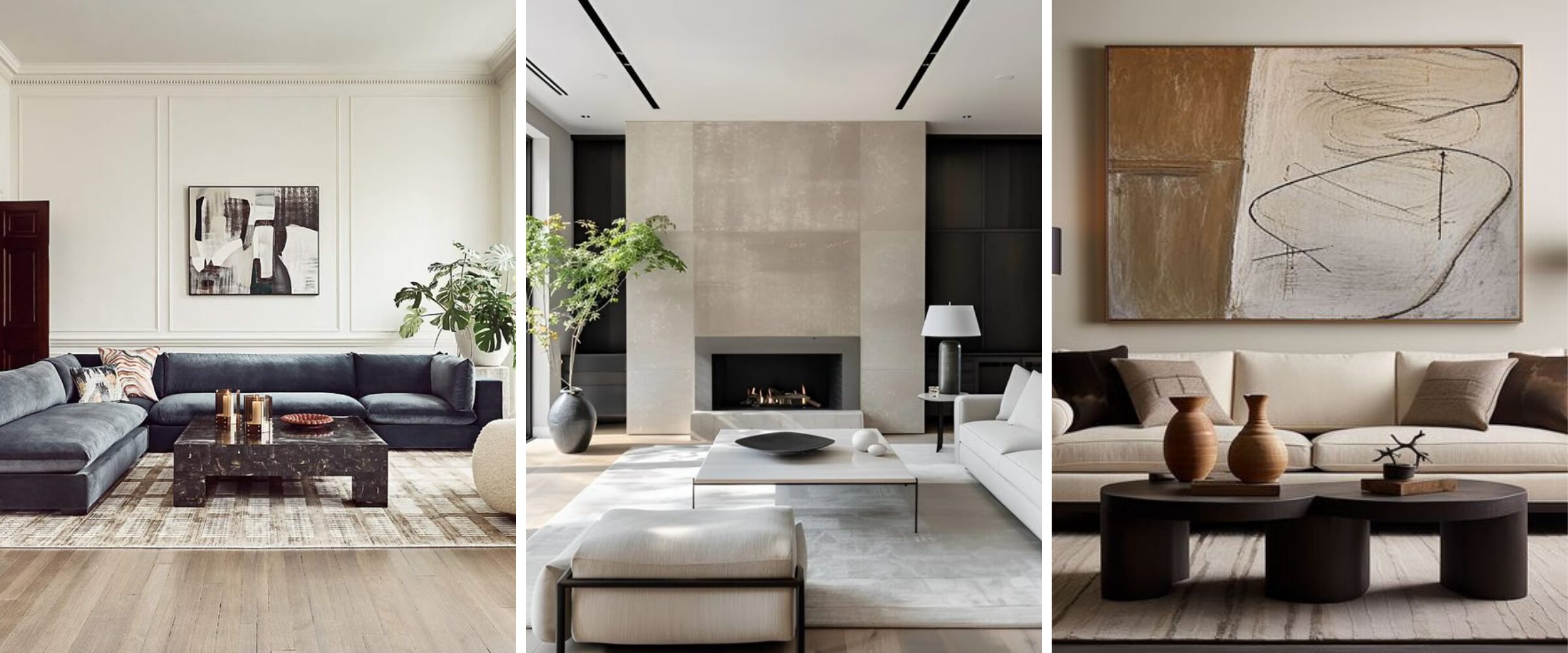
Images via Pinterest.
Understanding Scale and Proportion in Interior Design
What Is Scale?
Scale refers to how the size of one piece of furniture relates to the room as a whole. A giant sectional in a small living room can feel overwhelming, while a tiny loveseat in a spacious open-concept area can seem lost.
What Is Proportion?
Proportion refers to how different elements within a space relate to each other. Even if your furniture fits the room, it won’t look right if the proportions between items are off—like an oversized coffee table paired with a delicate, slim sofa.
Why it matters: A well-balanced living room is comfortable, visually appealing, and functional. When scale and proportion are wrong, a space can feel awkward or cluttered.
The 2/3 Rule: The Secret to a Balanced Living Room
Remember how I said there is an easy fix. It mostly boils down to one design rule for you to remember. One of the easiest ways to ensure proper scale is to follow the 2/3 rule—a key principle in interior design.
It’s also called the golden rule and says that furniture needs to take up ⅔ of the room, leaving the remaining ⅓ for moving around and negative space.
As a photographer, I have always used the rule of thirds to compose incredible shots. As a designer, I have my own take on this rule. I interpret it as the ⅔ to ¾ rule. Or it’s at least the ⅔ rule but no more than ¾ rule, if that makes any sense.
Even then I sometimes take some creative liberties on this rule depending on the situation. But if you’re new to interior design or nervous about making expensive mistakes, stick to my ⅔ to ¾ rule and you’ll be fine.
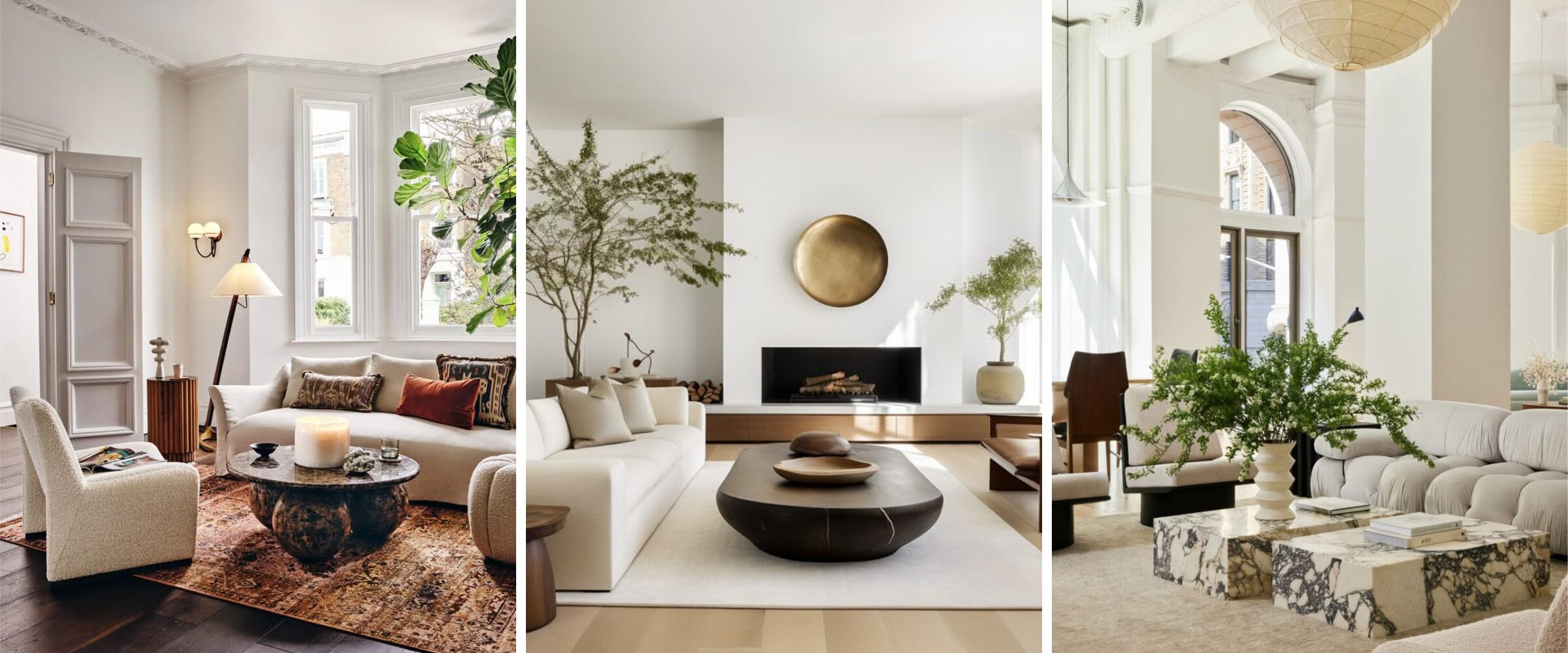
Images via Pinterest.
Here are some examples to help wrap your head around this rule.
- Sofa & Coffee Table: Your coffee table should be about 2/3 the length of your sofa to maintain balance. This ensures that the coffee table is substantial enough to feel anchored in the space but not so large that it overwhelms the seating area.
- Artwork Above Sofa: Wall art above a couch should be about 2/3 the width of the furniture below it for a proportional look. If the artwork is too small, it will feel disconnected from the furniture. If it’s too large, it can dominate the space and throw off the balance.
- Entertainment Units & TV Sizing: Your TV should be at least 2/3 the width of your media console for a visually pleasing setup. I would even go slightly bigger but a mistake I often see is TVs that are too big or media units that are too small. If the console is too small, the TV will look top-heavy, and if it’s too large, the proportions will feel off.
This rule is grounded in basic design principles and mimics the natural proportions we find visually appealing—which is why similar ratios are used in well-balanced compositions in photography and architecture. Using the 2/3 rule ensures that your living room has a sense of flow, proportion, and intentional design rather than feeling haphazard or mismatched.
By keeping this ratio in mind, your living room will feel harmonious and intentional rather than mismatched.
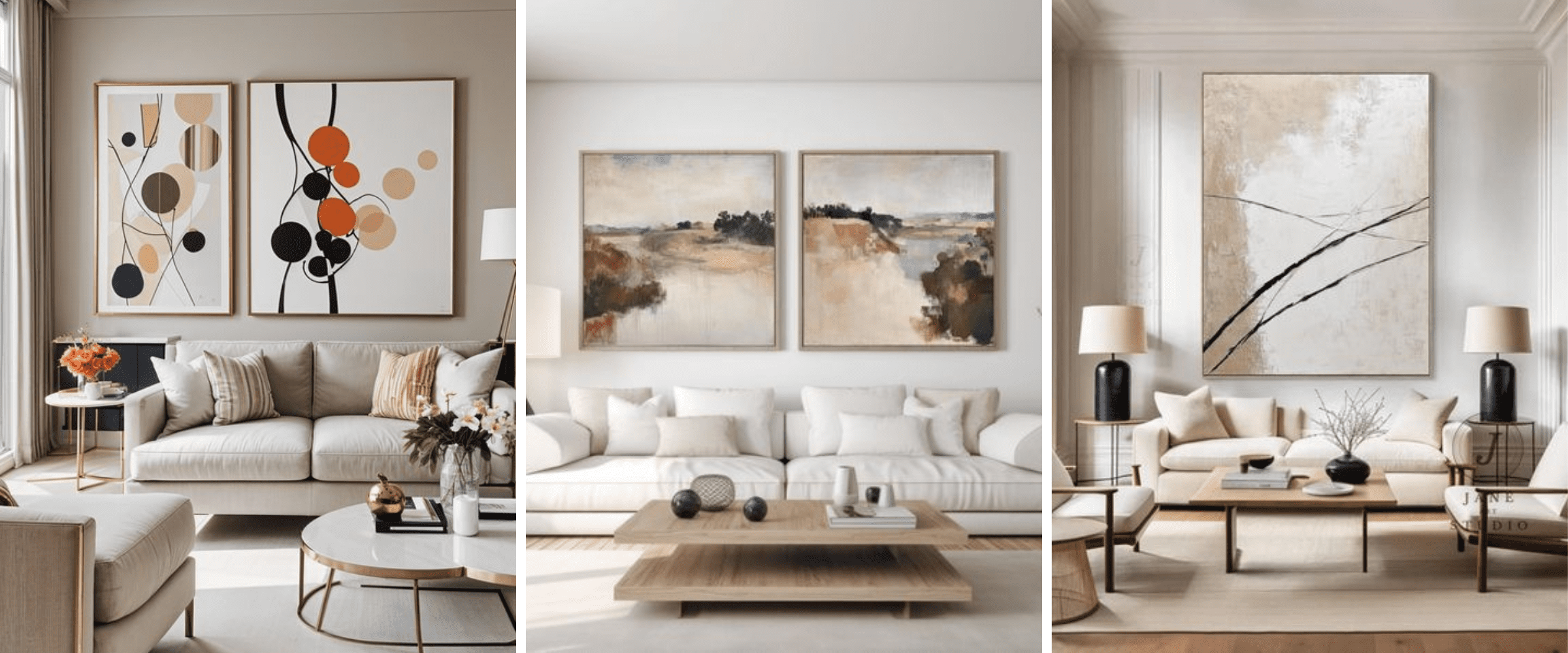
Images via Pinterest.
How to Choose the Right-Sized Furniture for Your Living Room
Sofa Size Guide
Your sofa is usually the largest piece of furniture in your living room, so getting its size right is crucial.
- Small living rooms (under 150 sq. ft.): Stick to sofas around 72-80 inches wide.
- Medium-sized rooms (150-250 sq. ft.): A 84-96 inch sofa works best.
- Large open-concept spaces (250+ sq. ft.): You can go up to 100+ inches or opt for a sectional.
In addition to choosing the right width based on the room size, there are a few other key dimensions in order to maintain comfort and visual balance.
There should be at least 16-18 inches of space between the sofa and the coffee table. This allows you to move comfortably while making sure the furniture feels connected. Too much space can make the pieces feel disconnected, while too little can make the layout feel cramped.
The depth is also another important factor to consider when you’re shopping for a sofa. If space is limited, a shallower depth of around 30-34 inches is ideal to prevent overcrowding and maintain that open feel we all want. On the other hand, deeper sofas can work well in larger spaces, offering a more relaxed and lounge-like experience.
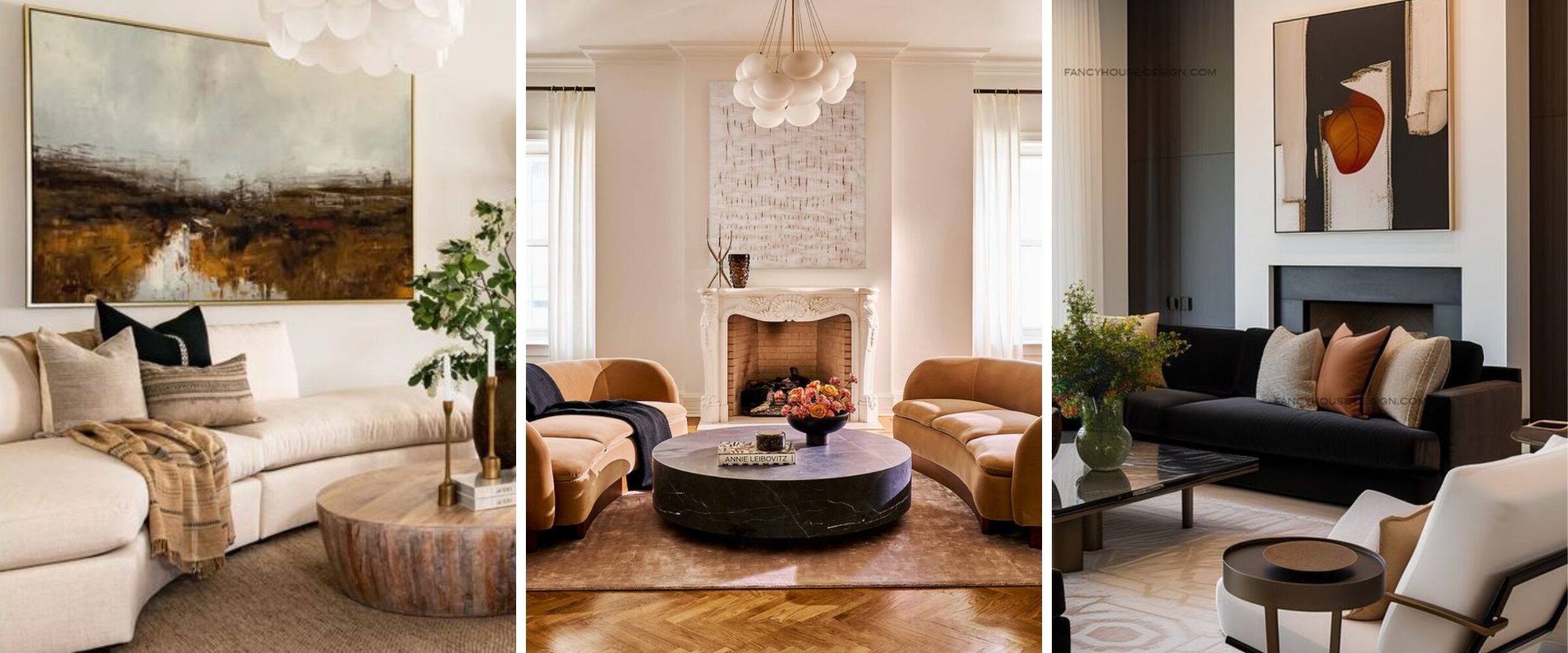
Images via Pinterest.
Coffee Table Size & Placement
The coffee table serves an important function in the living room, other than being a place to put down a cup of coffee or a cocktail. It also aesthetically anchors your seating area. Ideally, it should be about 2/3 the length of your sofa to maintain visual harmony, as we talked about earlier. Additionally, the height of the coffee table should be level with or slightly lower than the seat height of the sofa to ensure ease of use and a cohesive look.
The shape of the coffee table can also affect the flow of the room. I love using round coffee tables in small or irregularly shaped spaces, because they help soften the arrangement and prevent bumping into sharp corners. Rectangular or square coffee tables work well with standard sofas, because they align seamlessly with the seating layout.
Rug Sizing Mistakes to Avoid
One of the most common living room design mistakes I see (yes, I see a lot of design mistakes in my line of work!) is choosing a rug that’s too small. When a rug is properly sized, it helps define the seating area, making the space feel cohesive rather than fragmented.
For small living rooms, a 5×8 ft. rug works best if at least the front legs of furniture sit on it. In medium-sized spaces, an 8×10 ft. rug is a great option, while in larger spaces, a 9×12 ft. or bigger rug ensures all furniture pieces feel anchored. Ideally, at least the front legs of all seating should rest on the rug to create a unified design.
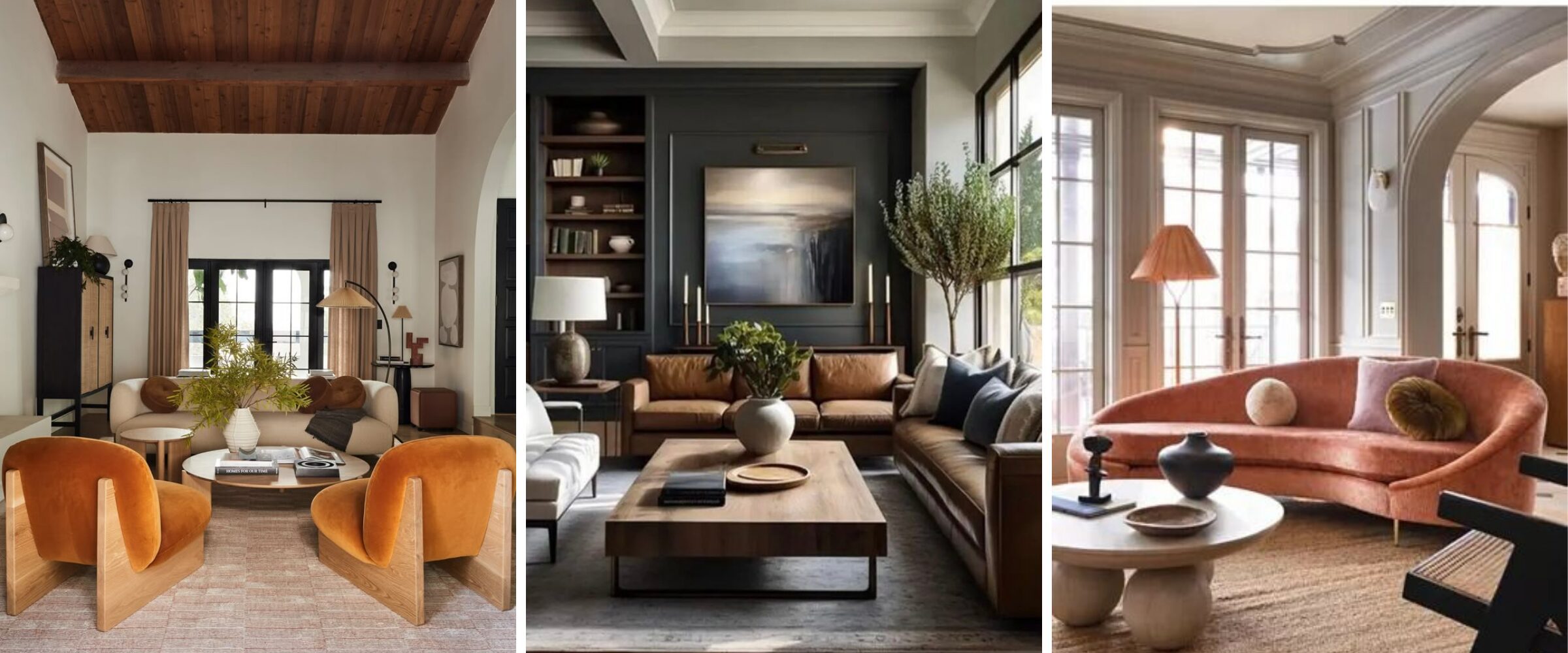
Images via Pinterest.
Getting the scale and size right in your living room is a must for creating a space that feels inviting, functional, and looks amazing. When furniture is the right size for your room and has the right proportions, it enhances both comfort and style, making the space more enjoyable to live in.
By following key proportion rules—like the 2/3 rule, and making sure furniture is spaced properly, and selecting pieces that complement the room’s architecture—you can achieve a well-balanced and harmonious design. Thoughtful planning the scale and proportion of your living room furniture means fewer costly mistakes and a space that naturally flows and feels right. Trust me, you won’t regret it!
If your living room still doesn’t feel quite right, don’t worry! Sometimes, an expert eye can make all the difference. Book a Room Rx session today, and let’s work together to create a living space that is not only stylish but also perfectly scaled to fit your home and lifestyle!

